Common Chile Diseases, Disorders, and Pests
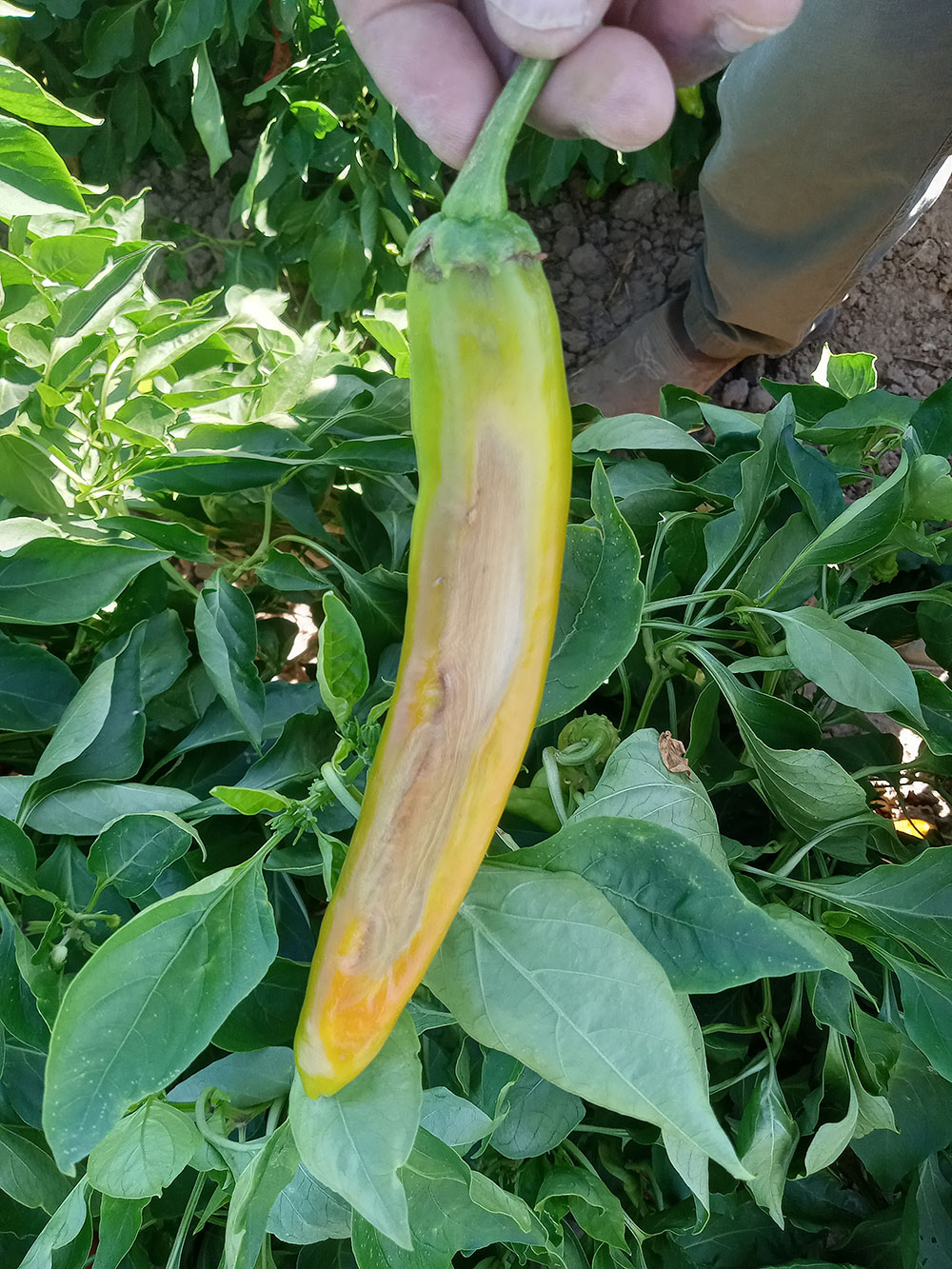
Sunscald in chile pepper pods (above) is an abiotic (non-living) disorder in which the fruits are exposed to the sun in the high heat of summer, causing streaks, rough tissue, and can also cause splits, allowing fungal and bacterial organisms to more easily enter.

Blossom end rot (above) is another disorder that is can be commonly found in chile - particularly in the pods. This disorder is due to a calcium deficiency in the plant and begins as a light green to yellow spot with sunken in tissue. This tissue will then begin to turn black due to colonization of a fungal species known as Alternaria.
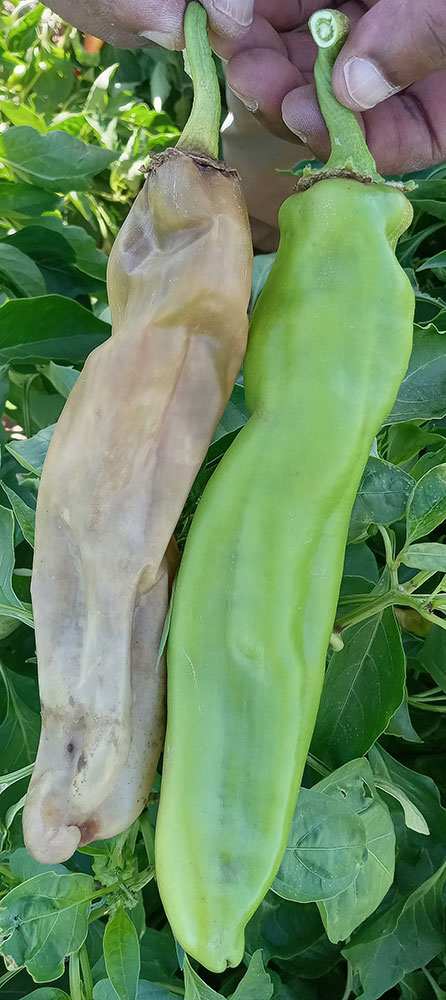
Bacterial soft rot (above) is what is affecting the chile pod to the left. Compared to the healthy pod on the right, there is clear tissue damage and discoloration. Warm and moist weather are the typical environmental requirements for bacterial soft rot to exist. These bacteria gain entry through wounded or damaged peppers. Once infected, the bacteria will start to break down the cell wall of the pod causing the tissue to become soft.
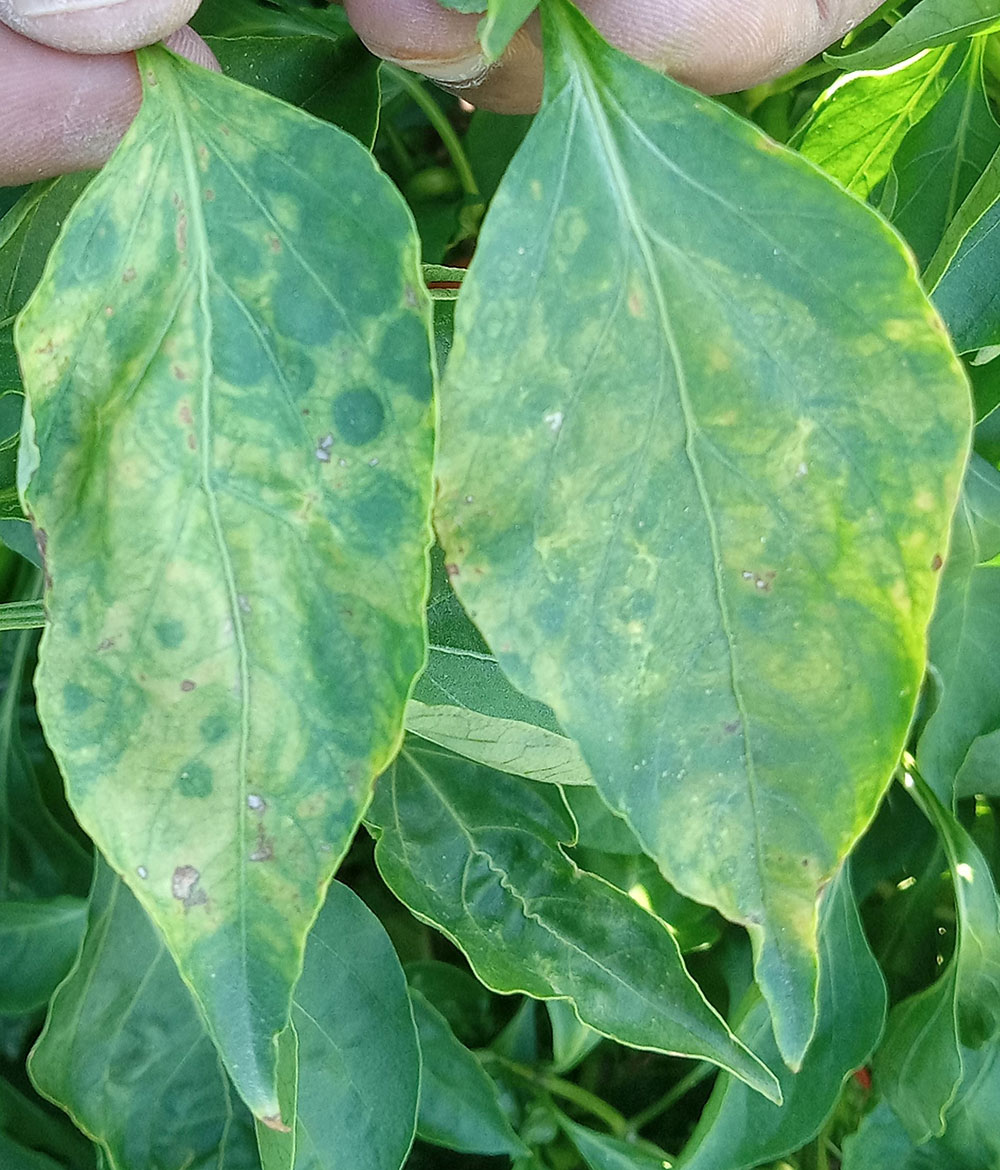
Tomato spotted wilt virus (above) makes an appearance in chile leaves found in a field just outside of Las Cruces, NM. This virus is indicated by the chlorosis (yellowing) of the leaves and the dark green spots that resemble targets. Thrips, an insect pest, are usually the cause of disease transmission. This virus can be a problem for chile farmers as it can cause the infected plants to wilt and die.

Root-knot nematode (above) is a common pest found in many plants and can disrupt water and nutrient uptake by galls that form on the roots, rendering them dysfunctional. The damage can be seen in the picture above. The roots are "stubby" - or - not as thin as they should be. This can be detected by either digging up the plant or symbolized by a nutrient deficiency. Due to the weakness these pests can cause in chile, the plants can become more susceptible to other diseases, disorders, and pests.
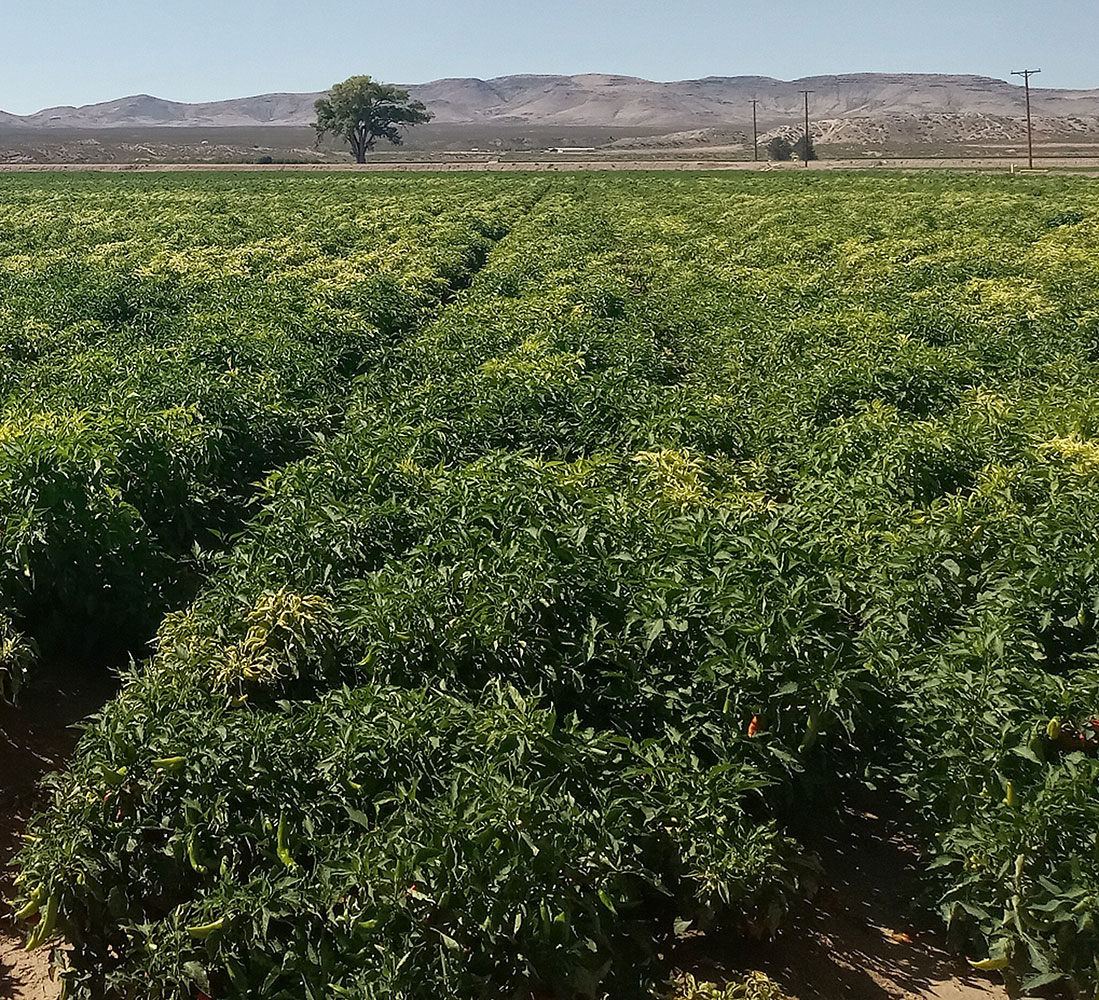
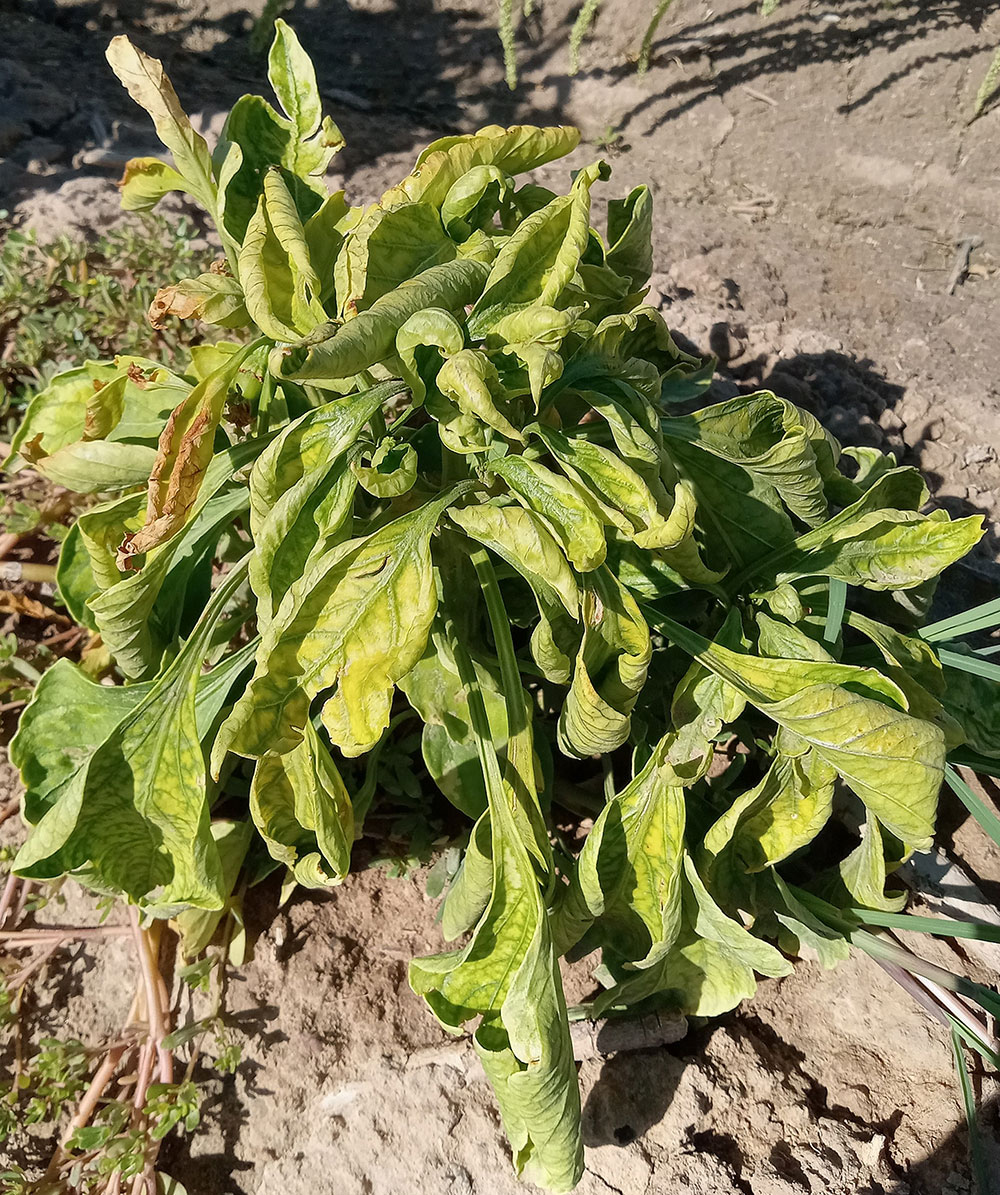
The yellowing in this chile field in Deming, NM (left) and Hatch, NM (right) is caused by a viral infection called Beet Curly Top Virus. This virus is transmitted by insect pests known as leafhoppers. Symptoms can include chlorosis (yellowing) of the chile plants with a rough or "waxy" leaf texture and can ultimately cause the plants to stunt in their growth, wilt, and eventually die. This virus can also impact yield by producing small pods if the plant does survive.
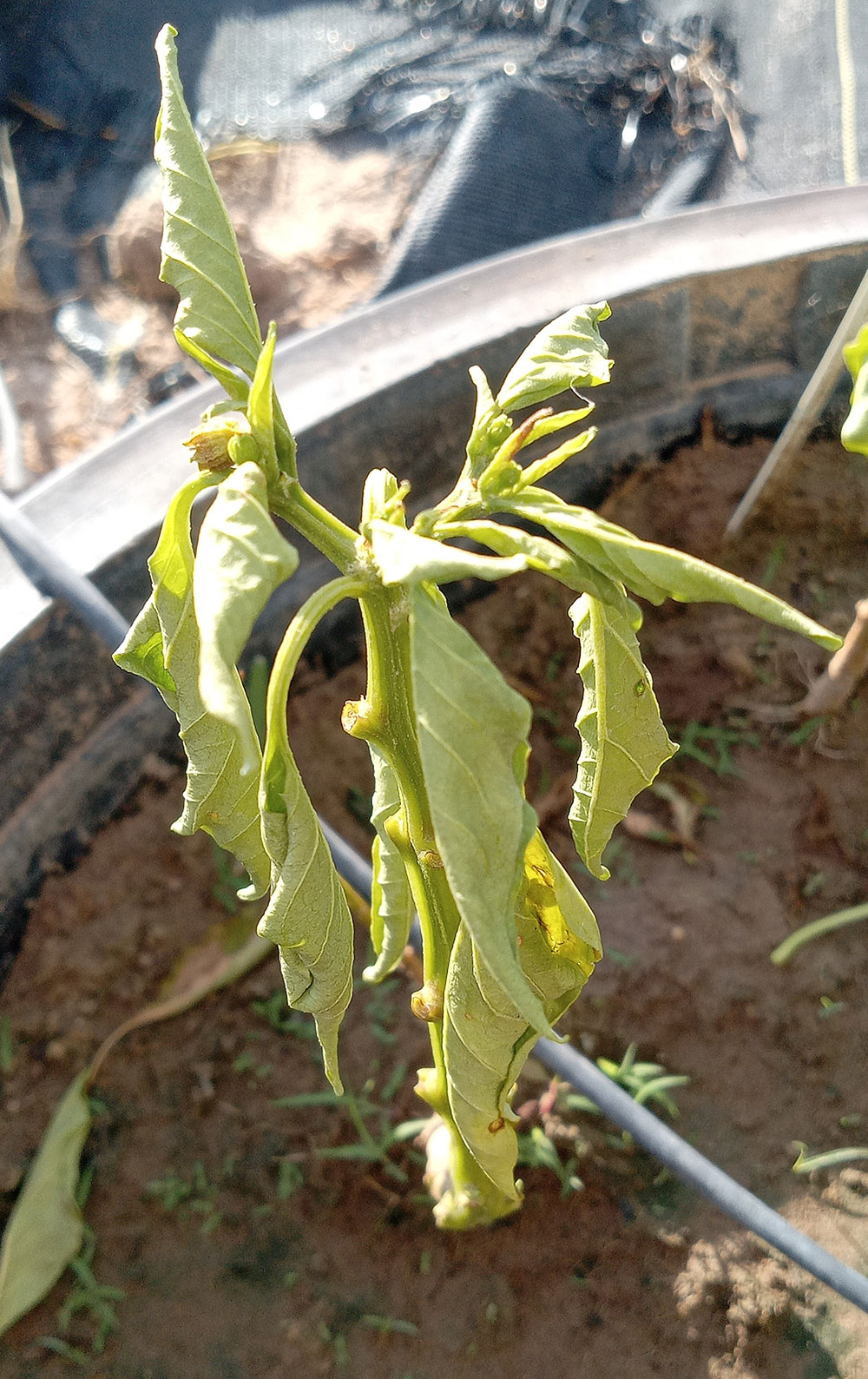
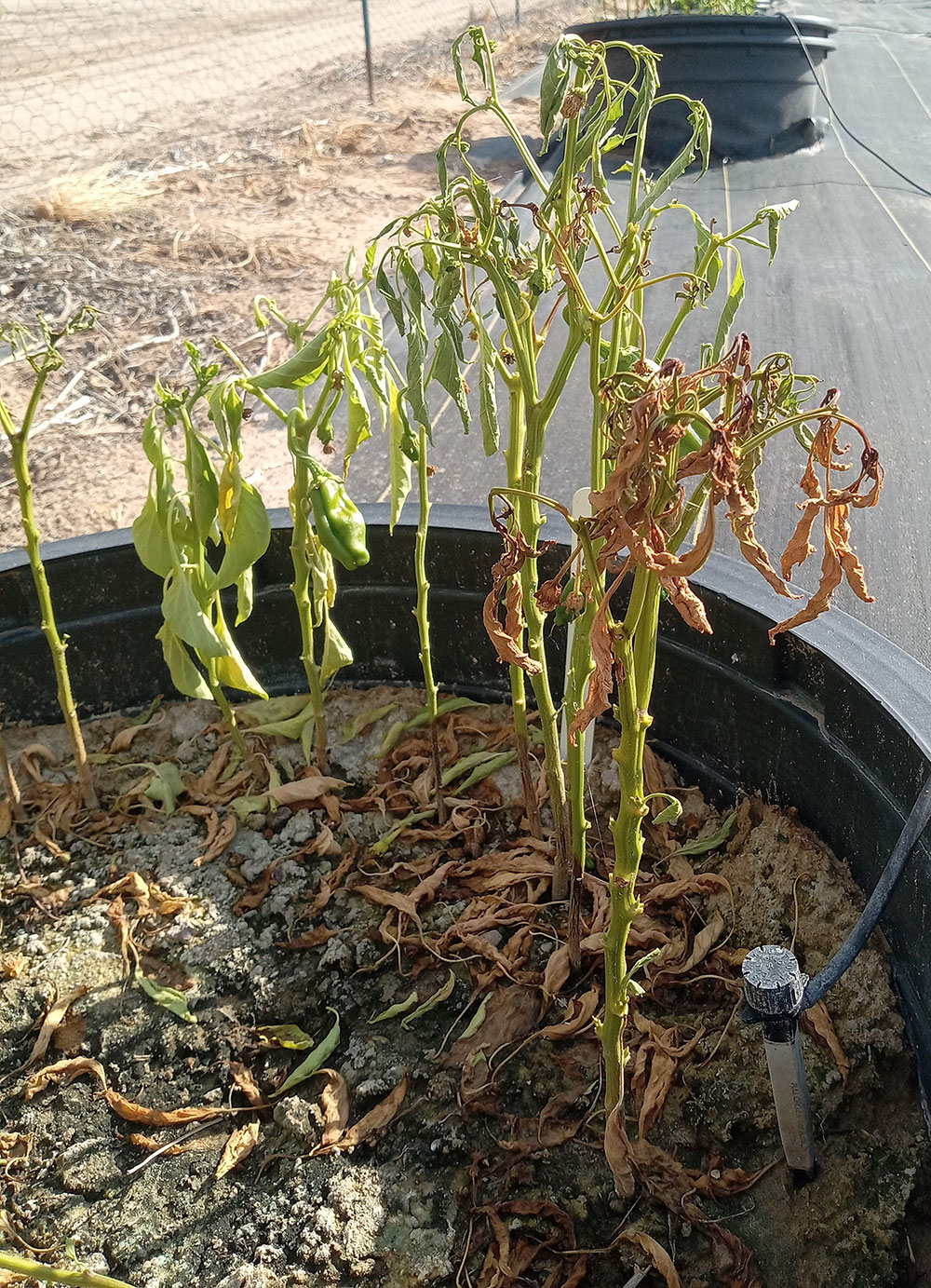
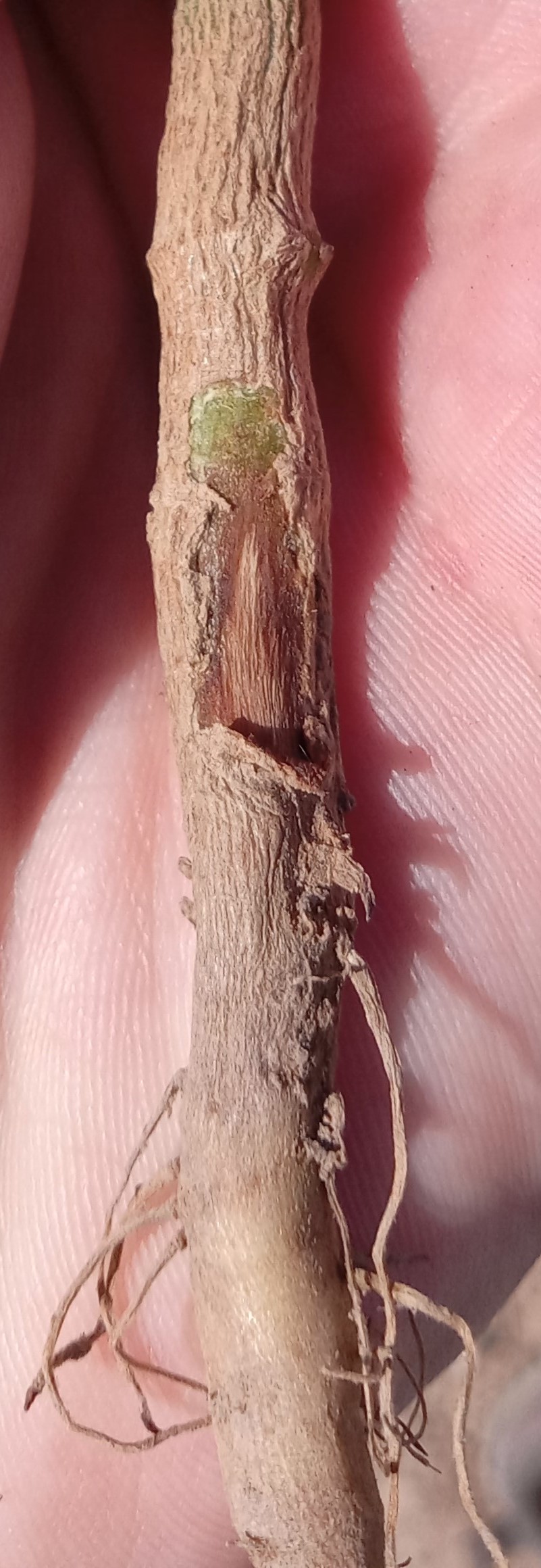
One of the major problems farmers face when growing chile is from a fungal-like pathogen called phytophthora (above). The spores of this pathogen are spread by water and can infect entire fields, causing chile to wilt, die, and lose yield. Some symptoms include stem necrosis (stem becomes brown to black and tissue starts to die - reference the picture to the right), stem girdling (a situation in which the plant will essentially choke itself disrupting water and nutrient uptake into the upper portions), defoliation (the loss of leaves), wilt, and eventually death. Chile breeders are working hard to produce phytophthora resistant/tolerant chile varieties.
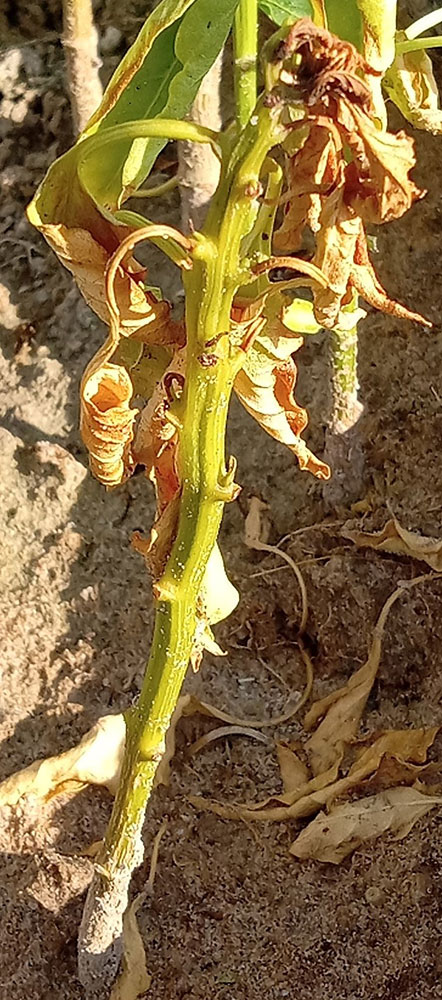
Verticillium wilt (above) is another fungal pathogen that commonly affects chile plants and can present a problem for growers. This fungus will penetrate the root system, making its way into the plant and disrupting the flow of water from the xylem (vascular tissue in the plant responsible for movement of water). The disruption of moving water throughout the plant will cause wilt due to water stress and eventually death of the plant.
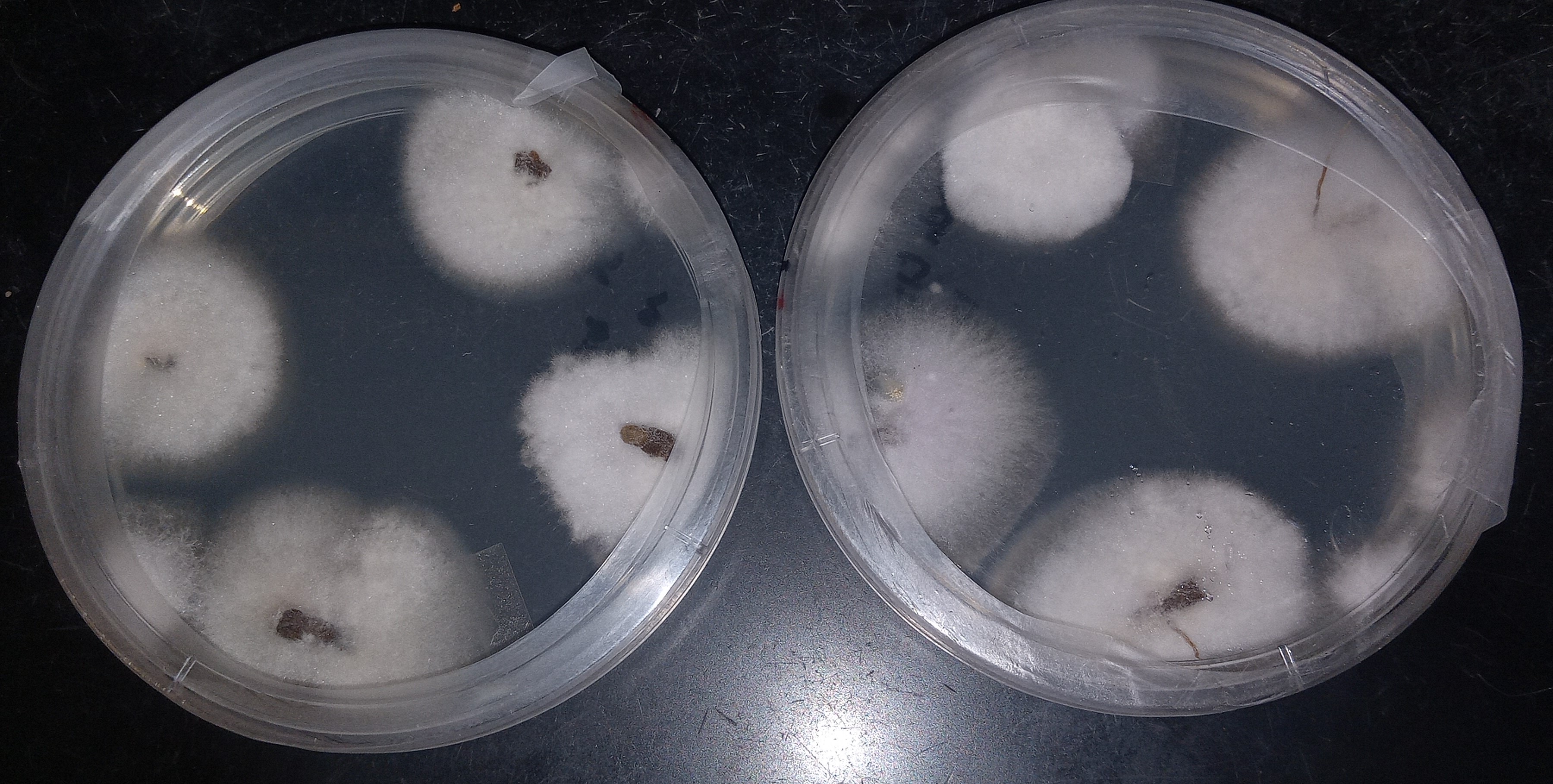
In order to determine what disease presence is in the field, outside of morphological symptoms, plants are collected and brought back to the lab for processing. The plant material is surface sterilized to kill off all external pathogens and limit contamination, then plated onto acidified potato dextrose agar (APDA), and the resulting pathogen that grows is then documented and recorded. Above are two examples of fusarium isolated from two wilted plants found in the field. Fusarium is a fungal pathogen that can cause the lower leaves to turn yellow, discoloration of the stem, wilt, and ultimately, whole plant death.
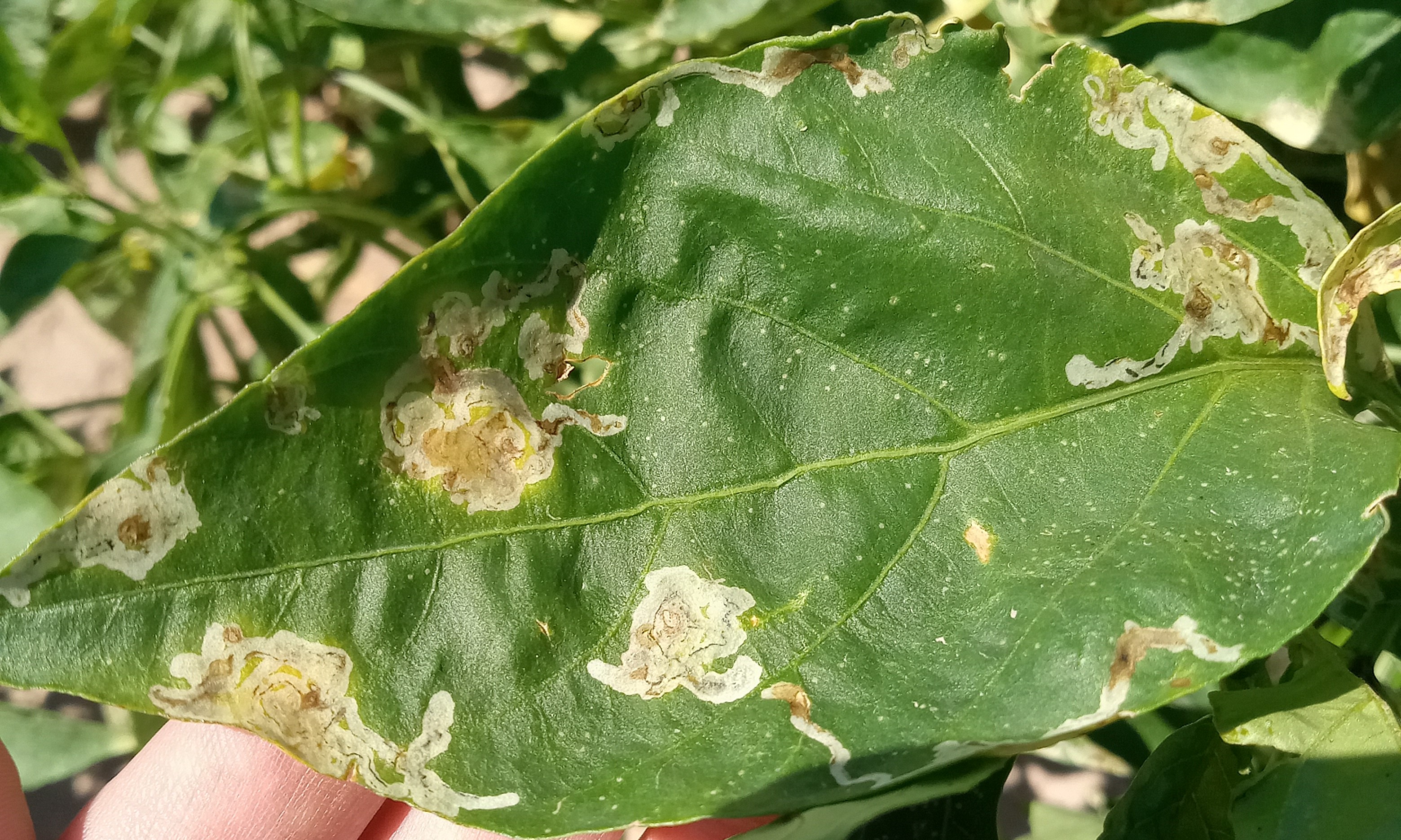
Leaf miner is a common pest among chile peppers and other plants that cause damage to the leaves. The larvae will feed on the inside of the leaves and leaves the light, distinct trails seen above. These trails are often associated with the yellow feeding spots also observed in the picture above. When the infestation gets heavy enough, it can cause plants to lose leaves (defoliate) and can significantly disrupt photosynthetic processes.

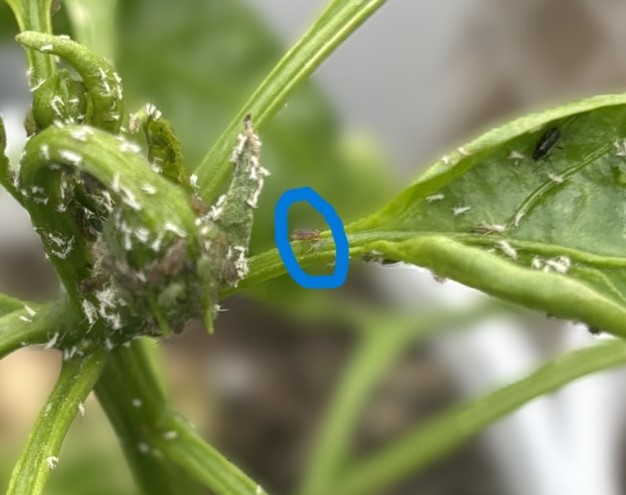
Aphids (circled in blue) are another common pest, particularly when growing inside a greenhouse. They will use their piercing-sucking mouthparts to feed on the leaves, depriving them of nutrients and water, and disrupting photosynthesis. Some symptoms of aphid damage include curled or twisted leaves, yellowing, and stunted growth. Signs that aphids have been on a plant include either the occurrence physical specimen on the plant or a sticky frass (insect dung) called honeydew. Secondary signs that aphids may be a problem is the presence of ants, as they feed on the honeydew and, in return, protect the aphids from predators.